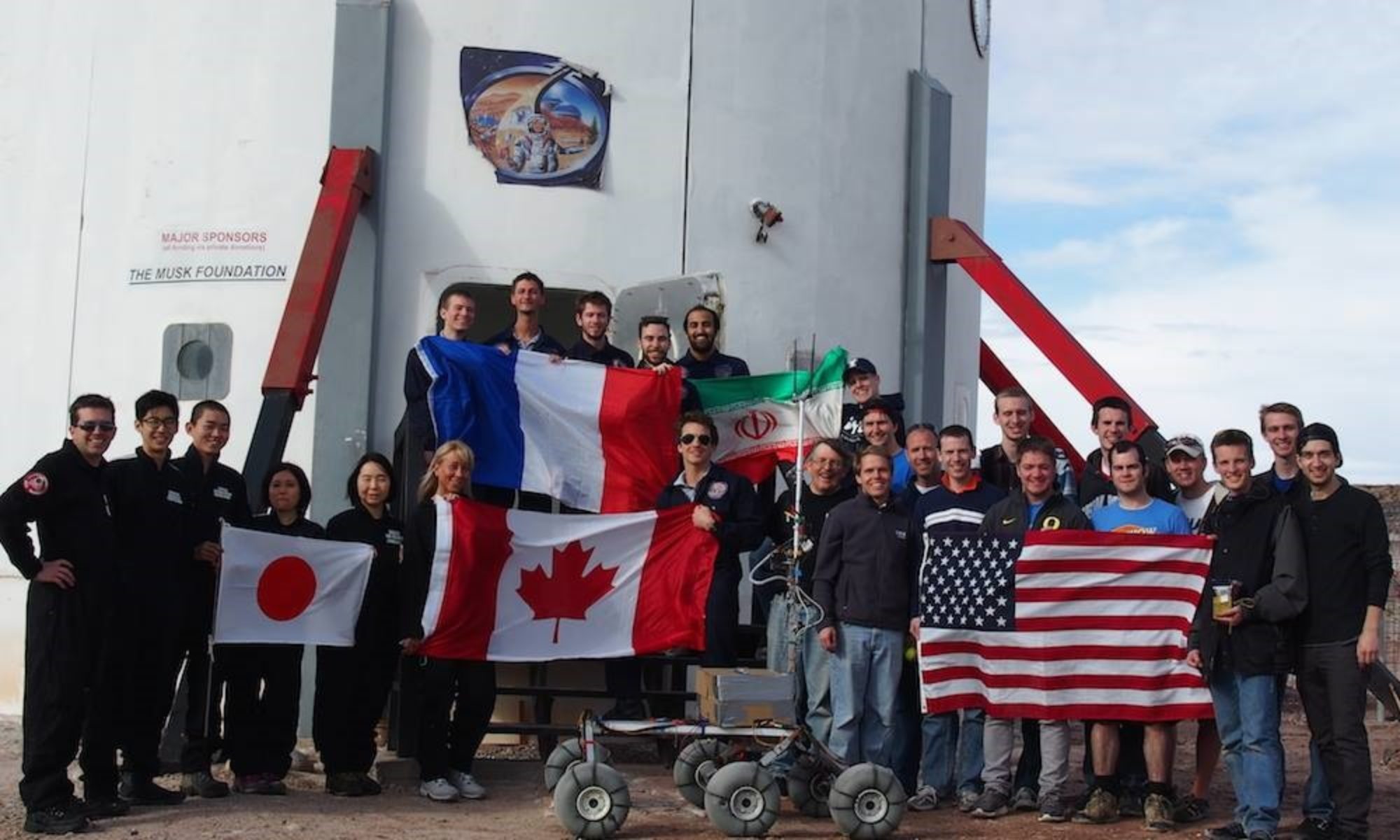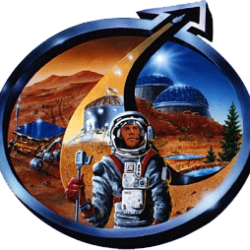Back to Earth
Sol 11 began on a slightly sombre note. At 09:00, the crew held a minute’s silence to mark the anniversary of the Columbia disaster, followed by a bit of a speech by Steve about the ill-fated crew and mission. It’s a fascinating story, from both a technical and human perspective, and serves as a sobering reminder that what we’re doing here now will one day be very real for the human crews sent to Mars – which, when it happens, will be one of the most extraordinary and precarious ventures our species has ever taken.
As the last full day ‘in sim’, we planned to make full use of our time and conduct two hefty EVAs. The first went out to Candor Chasma: a deep, winding riverbed that cuts a deep channel through the rocky landscape east of the MDRS. As we climbed down and trekked much of its length, further than our crew had previously, we found ourselves surrounded by huge cliff faces of stratified rock, and discovered a wealth of interesting rock samples underfoot (including some great petrified wood fossils, and other novel things like jasper for Steve to spectrify).
The second EVA was almost cancelled on account of wet weather, but luckily the looming rain was delayed by a few hours and the team was cleared to proceed. They wanted to go to White Moon again, 4km north of the MDRS, but with the rovers’ batteries depleted more quickly by the colder weather they reached 55% charge (their point of no return) slightly north of Cowboy Corner, just over halfway to their destination. The team made the best of their remaining time by collecting additional samples from the area around the rovers (which they’d already visited during a previous EVA). At this site they found more petrified wood, concretions, endoliths growing on chert, as well as some extra parts of Clare’s ‘weird fizzy rock’ (carbonate). They also got to see a few special sights: a yardang from below, an antelope (I didn’t think they married, hurr durr), squirrels, birds, and a humanoid native lifeform on a faraway hill.
Unfortunately, these will likely be our last EVAs as said wet weather (and a hint of snow) has made conditions tomorrow unsuitable.
So… it’ll all end at midday tomorrow. After that, we do our cleaning, packing… and if time and weather allow, maybe some unencumbered hiking.
Highlights of the day: ‘Cobweb’ rocks (actually called "chicken wire gypsum"), other cool stones, the Chasma, remembering Columbia (maybe this should be a lowlight?), animals, Scott’s sugar stash.
Lowlights of the day: Steve mangling a bread loaf, biggest power loss yet, foggy visors, Clare hasn’t watched The Simpsons, someone dropped/broke multiple rock samples, EVA (mis)communications.
– Alexander Tobal, Crew 291

